

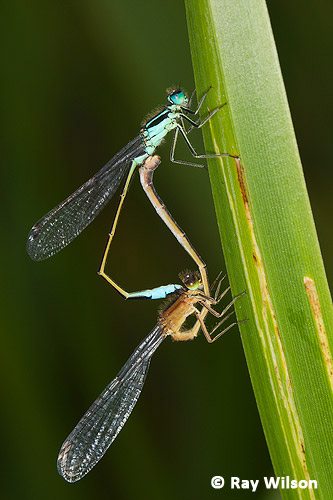
Male copulating with |
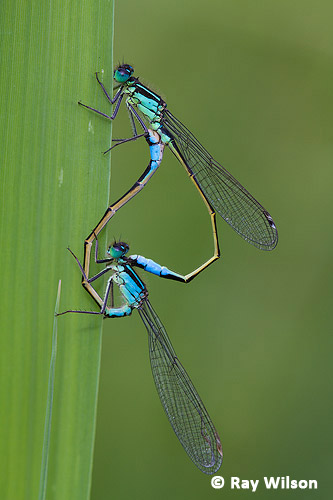
Male copulating with female of andromorph form 'typica' |
Blue-tailed Damselflies are an abundant species throughout most of the UK and, due to their ability to tollerate a degree of pollution and eutrophic conditions, they are usually the first species to colonise new ponds.
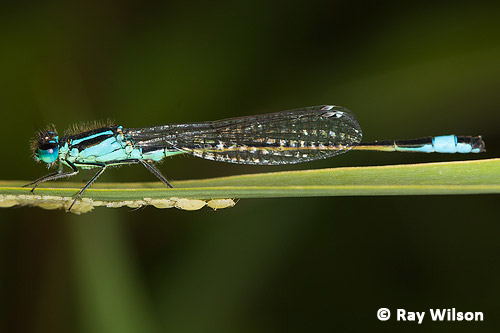
Females occur in a number of colour forms, many of which are age-dependent.
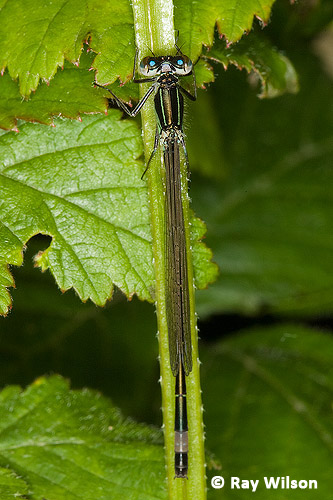
teneral male |
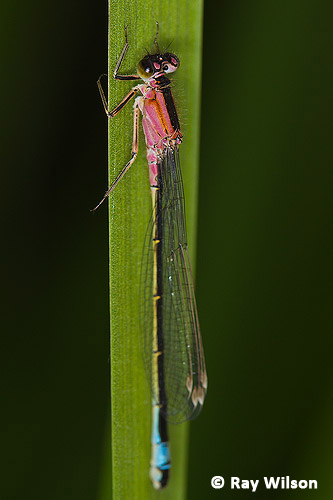
female of colour form 'rufescens' |
A common colour form in young females, up to about 8 days after emergence, is the so-called "rufescens" (above right and below). As they mature the rufescens females take on a yellowish-brown colour that includes the formerly blue abdominal segment 8. An example of this 'infuscans-obsoleta' form is shown in the left-hand photo at the top of the page.
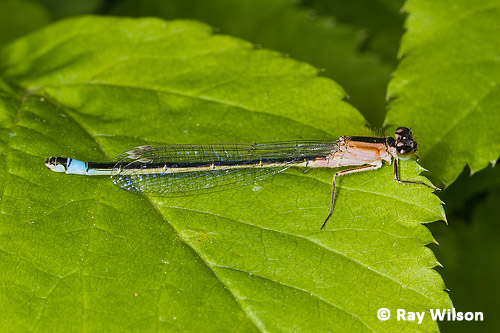
Another common colour form in young females is "violacea".
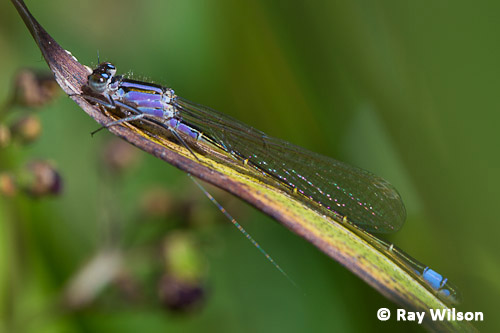
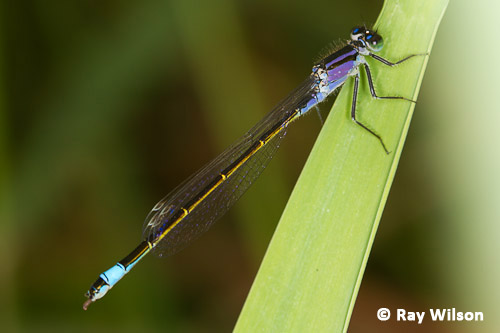
These usually mature into the andromorph form "typica" (below) or can also attain a brownish form "infuscans".
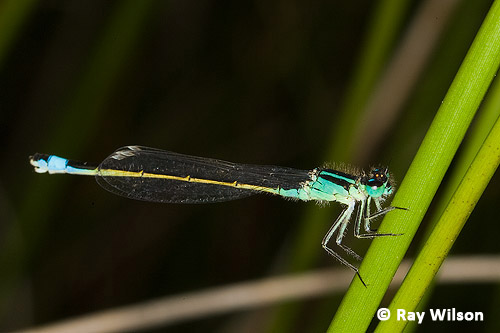
Ray Wilson owns the copyright of all images on this site.
They may not be used or copied in any form without prior written permission.
raywilsonphotography@googlemail.com